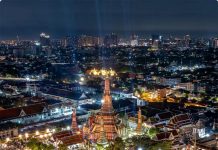As more countries have begun to recognize the need for regional solutions to common problems, economic corridors have emerged as key manifestations of regionalism around the world.
Trade corridors have been, or are being, established across national borders all around the globe. These corridors are meant not only to link cities with one another, but also to create new zones of economic activities between the urban poles.
In the Greater Mekong Subregion (GMS), the economic corridor has been adopted as one of the main platforms for sub-regional development. Tourism is one of the key factors that have greatly contributed to the growth of the region’s economy. The GMS region comprises Cambodia, China, Laos, Myanmar, Thailand, and Vietnam.
These nations have a diverse range of natural resources, with numerous biosphere reserves and eco-tourism parks, and many places of historical interest as well as a thriving arts scene.
In addition, the Mekong Delta region is home to over 120 UNESCO-recognized cultural and historical sites and several biosphere reserves, which altogether boast 6.5% of the region’s total annual foreign visitors.
To underscore the promising potential, the Mekong Tourism Forum 2012 has recently been held in Chiang Rai to further assess the challenges of human resources, pro-poor sustainable tourism, sub-regional product development and marketing for the next 20 years.
Cooperation among the GMS countries, which is described as one of the world’s fastest growing regional cooperation and development channels, has posted an average annual economic growth rate of 6% for the past decade.
After 20 years of cooperation, the Greater Mekong Sub-region (GMS) now attracts over 30 million International Visitor Arrivals each year, generating significant economic and social benefits. The tourism sector contributes over $30 billion in annual receipts to the region’s GDP, and is directly involved in the reduction of poverty through the creation of more than 6 million jobs, many of which have been taken up by women, youth and ethnic minorities.
The GMS countries are collectively targeting 52 million international tourist arrivals and US$53 billion in sub-regional tourism revenues by 2015.




